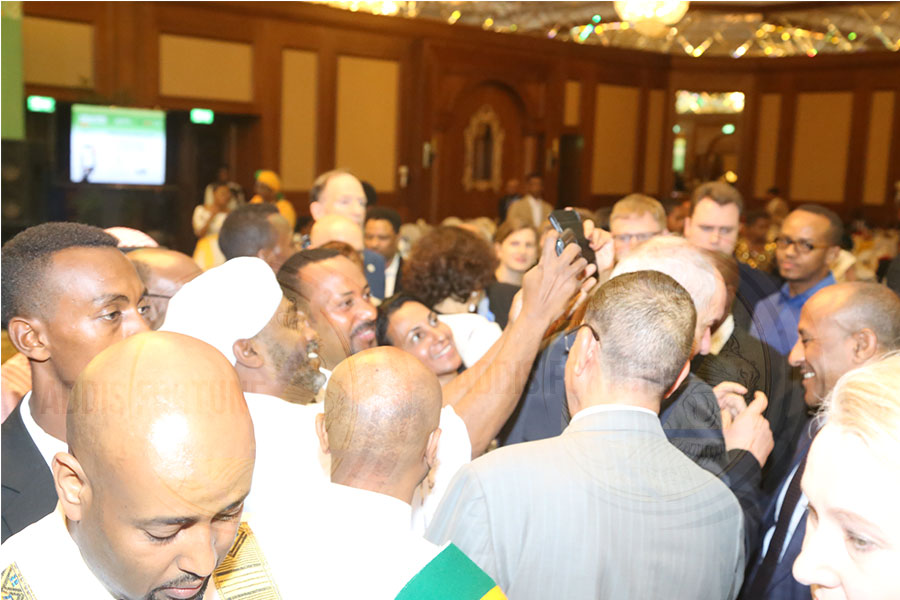
Photo Gallery | 180344 Views | May 06,2019
Jul 19 , 2025. By Kidist Yidnekachew ( Kidist Yidnekachew is interested in art, human nature and behaviour. She has studied psychology, journalism and communications and can be reached at (kaymina21@gmail.com) )
Across the world, and certainly in Ethiopia, new devices arrive fresh from the box while their instruction manuals remain untouched. Shiny and promising, these gadgets invite immediate interaction, but the guidebooks that accompany them often feel like an afterthought. Many people turn instead to instinct, a friend’s advice, or increasingly, online videos. This trend reflects more than mere impatience; it marks a profound shift in how people prefer to learn.
Why do so many avoid reading these guides, preferring to spend time trying to make sense of things on their own instead?
Manuals are meant to assist, detailing how to set up, operate, and troubleshoot devices, but often fall short. Filled with technical jargon and structured in stiff, lifeless prose, they alienate rather than guide. Their tone lacks warmth, and their language rarely speaks to everyday users. The result is an object that provides information but not understanding.
Unlike a person, a manual cannot answer questions or adjust its explanation when confusion arises. It offers no demonstration, no dialogue, and no reassurance in moments of uncertainty. In contrast, asking a friend feels more natural and rewarding. The learning becomes social, flexible, and tailored to immediate needs.
Hands-on help carries trust and familiarity, particularly when it comes from a peer or relative. Someone trusted can explain the same steps using simpler words and personal experience. Demonstration adds clarity; repetition invites questions. Such exchanges often bring comfort and confidence that a manual simply cannot provide.
In recent years, a new helper has become very popular: The rise of platforms like YouTube adds another layer to this shift. Tutorials now offer the benefits of visual learning without the need for a physically present teacher. Users can pause, rewind, and replay instructions as many times as necessary. Watching someone else perform a task helps make the abstract feel achievable.
Consider what happened in a friend’s household last week, when her parents purchased a new Smart TV. Its sleek remote and layered menus introduced a digital world unfamiliar to them, far removed from their old set with basic channels. Though fluent in English and Arabic, they left the thick manual untouched. Even as they fumbled through the setup, switching languages and navigating interfaces, the manual stayed in the box.
They struggled to access local news or launch streaming apps, encountering cryptic errors and failed connections. The screen remained stuck on "No Signal," and the remote’s voice assistant kept triggering by accident. They spent the evening trying various menu settings, their frustration mounting with each failed attempt. At no point did the idea of consulting the manual even arise.
Their solution came in the form of their teenage nephew, known in the family as a tech whiz. Upon arrival, he reached straight for his phone rather than the manual. Within minutes, a YouTube tutorial walked him through the setup, explaining everything from input selection to software updates. The instructions had existed in the manual all along, but the video made the information easier to digest and apply.
This preference for interpersonal or visual learning has deep roots in Ethiopian culture. For generations, knowledge travelled through stories, observation, and apprenticeship. Oral traditions prioritised lived experience over written documentation. That legacy continues today, shaping how people respond to unfamiliar technologies.
While this behaviour is visible in Ethiopia, it reflects a broader global shift. People from many countries increasingly seek visual and interactive instruction over static text. The immediate feedback and clarity offered by online content contrast starkly with the opacity of traditional manuals. As devices become more complex, users gravitate toward methods that mirror human conversation.
Manuals still serve a purpose, especially in technical fields requiring precision. But for everyday users trying to navigate new tools, other learning modes often feel more effective. Whether through a conversation or a video, people want guidance that feels accessible and alive. In a world saturated with devices, learning remains, at its core, a profoundly human process.
PUBLISHED ON
Jul 19,2025 [ VOL
26 , NO
1316]

Photo Gallery | 180344 Views | May 06,2019

Photo Gallery | 170542 Views | Apr 26,2019

Photo Gallery | 161578 Views | Oct 06,2021

My Opinion | 137274 Views | Aug 14,2021

Nov 1 , 2025
The National Bank of Ethiopia (NBE) issued a statement two weeks ago that appeared to...

Oct 25 , 2025
The regulatory machinery is on overdrive. In only two years, no fewer than 35 new pro...

Oct 18 , 2025
The political establishment, notably the ruling party and its top brass, has become p...

Oct 11 , 2025
Ladislas Farago, a roving Associated Press (AP) correspondent, arrived in Ethiopia in...